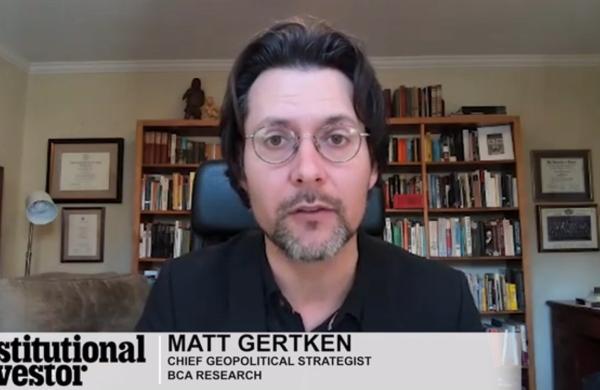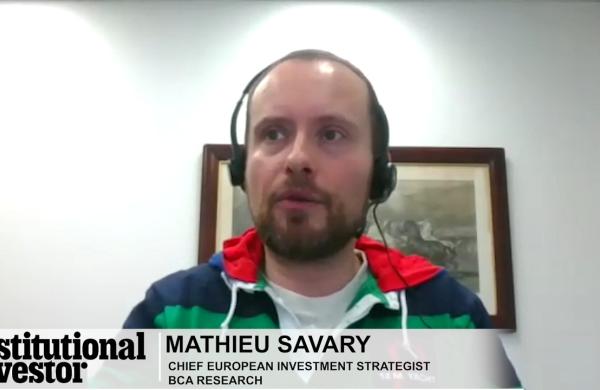Wayne Cooperman remembers accompanying his dad, Goldman Sachs Group executive Lee Cooperman, on a business trip to Texas a few decades ago.
"I was about ten, and I went to a lot of dinners and listened to the same speech over and over again," Wayne, now 38, says. "It was the late '70s, and I still remember him saying, 'There are two unhappy groups of people -- the bulls and the bears.'" The market was trending sideways at the time.
Lee Cooperman, 61, offers a father's perspective: "After I did two presentations, Wayne was able to do the presentations on his own. He kept mimicking me."
The temptation to imitate his paterfamilias must have been strong for young Wayne: His father was a leading light at one of the most admired firms on Wall Street. The senior Cooperman worked at Goldman for 25 years, mostly as a securities analyst (for nine straight years, starting in 1977, he was voted the No. 1 portfolio strategist on this magazine's All-America Research Team) and, eventually, as co-head of the firm's investment policy committee. And from 1989 to 1991, he was chairman and CEO of Goldman Sachs Asset Management.
So after Wayne graduated with honors from Stanford University in 1988, he naturally gravitated to Goldman's investment banking boot camp.
"I couldn't stand it," he says. "I was staying up late doing mindless stuff -- a lot of photocopying. I'd sit around all day doing nothing, and then at 8:00 at night, someone would dump work on you and tell you they needed it the next day."
He decided to quit the two-year program after five months, but first he consulted his father. "He asked me whether I'd be disappointed if he left," remembers the senior Cooperman, "so I told him a story." He confided to Wayne that he'd planned to become a dentist but had quit dental school after only eight days, despite having paid a full year's tuition and spent $1,200 on equipment, because he decided he wasn't interested in teeth after all. "I told him, 'Do what you want to do, but you must be able to support yourself,'" Cooperman adds.
Wayne has supported himself rather nicely. Today he runs a long-short equity hedge fund firm, New Yorkbased Cobalt Capital, which manages $1.7 billion. Its domestic fund, Cobalt Partners, and a predecessor fund run by Cooperman and former partner Ricky Sandler together have racked up a 22.2 percent average annualized return, net of fees, since 1995. Cobalt charges a 1 percent management fee (1.5 percent for new investors) and a 20 percent performance fee. The Standard & Poor's 500 stock index managed a 9.5 percent annual average return over that same period. In 2004, a pretty good year for the markets, Cobalt did even better, up 19.6 percent after fees. The fund has never experienced a down year -- not even during the bruising three-year bear market that followed the bursting of the tech-stock bubble.
"His performance is outstanding," brags Wayne's father, who has a professional as well as paternal appreciation for his son's long-short investing skills, because he too runs a hedge fund. Since leaving Goldman in 1991, Lee Cooperman has been the president and majority stockholder of New Yorkbased Omega Advisors, which had $3.5 billion in assets at year-end 2004 and has returned 18 percent (net) to its investors over 14 years.
"Wayne Cooperman makes money when the market doesn't," says Antoine Bernheim, president of Dome Capital Management, a New York hedge fund.
Wayne has been trying to avoid comparisons with his famous father his entire life. (Initially, he refused to cooperate on this story out of fear that it would overemphasize the father-son angle.) He didn't grow up talking stocks around the dinner table, Wayne emphasizes. Nor did he see much of his father's Wall Street pals. Lee Cooperman concurs: "I didn't bring home my stuff. I traveled 80 to 90 days per year." Adds Wayne matter-of-factly, "He wasn't home for dinner."
His mother had as much to do with shaping Wayne's character as his father did. "He never intended to be like his father," says E. Lee Hennessee, managing principal of New Yorkbased hedge fund consultancy Hennessee Group, who has known Wayne for years. "What I like about him most is his mother. She is a cool lady. She is an educator, a principal who never quit working. She was an advocate of excellence. He had privileges, but she encouraged him to do his own thing. She is the integrity behind who he has become." For several years Toby Cooperman was a vice principal of the Early Childhood Learning Center, a school for the learning-disabled, in New Jersey.
Wayne, who attended Millburn High School in New Jersey, chose to go to college out west, 3,000 miles from his father's alma maters: Hunter College of the City University of New York, where the senior Cooperman got his BA, and Columbia University, where he earned his MBA. At Stanford, Wayne majored in economics and political science and was elected to Phi Beta Kappa in his junior year.
Soon after quitting Goldman's training program, in January 1989, the younger Cooperman became the first analyst hired by Mark Partners, a small New Yorkbased hedge fund outfit started by Morris Mark, a Goldman alumnus and friend of Wayne's dad's. On Cooperman's first day, Mark sent him to reconnoiter a cell phone conference in San Antonio, Texas.
"I didn't know what cellular was," Wayne says. But he became intrigued by the new technology and the companies purveying it, and soon he was comfortably covering not only cellular stocks but also those of tech, media and cable companies in general, as well as restaurants and beverages. "He was bright, diligent and had a lot of common sense," Mark remembers. "He had a great attitude and a great character."
After two years as a jack-of-all-(stock)-trades, Wayne took a sabbatical from Mark Partners to pursue his MBA at the University of Pennsylvania's Wharton School. But after returning to the firm in 1993, he grew restless. "Morris had total control and didn't cede much," says Sandler, who was himself a Marks Partner analyst. "Wayne felt he'd hit the ceiling and had learned all there was to learn."
So at the end of 1994, he quit to start his own hedge fund firm, Fusion Partners -- with Sandler. He was the son of hedge fund manager Harvey Sandler, another Goldman alum and a friend of Lee Cooperman's. Starting the firm was a bold step: Cooperman was 28 and Sandler 25.
"In this business everyone has ambitions and goals," Cooperman says now. "I figured at the end of the day, we could make a go of it ourselves."
Partly bankrolled by a $25 million investment from their fathers, the pair set out to apply value principles. "You gravitate to the style that fits with your personality," says Wayne. "I am risk-averse and always looking for diamonds in the rough." Lee Cooperman, also a confirmed value investor, insists that Wayne adopted the approach strictly "by osmosis." In fact, Wayne says, his and his father's portfolios don't overlap much.
Cooperman and Sandler's approach worked better than even they could have hoped. The pair finished their first year up 31.4 percent, net of fees. And during the fund's first three years, Fusion's after-fee annual returns ranged from 31 to 41 percent -- without a single down quarter. By the end of 1997, the fund's assets had grown to $270 million.
But then in its fourth year -- turbulent 1998 -- Fusion lost about 1 percent, while the S&P 500 soared almost 29 percent. "It was a very off year," Cooperman says tersely. The fund was hurt, he admits, by poor stock selection and lousy performance among small- and midcap stocks. Still, it was also the year of the disastrous Russian default and the ongoing Asian crisis, when the Dow Jones industrial average plunged more than 500 points on the last day of August before recovering in fits and starts to finish the year up.
"We began to disagree on investment philosophy, stock selection and business building," Sandler says. Adds Cooperman: "After four years it was not always easy to work together. We had disagreements."
Sandler muses that he and Cooperman have fundamentally different ways of dealing with conflict. Wayne is a debater -- "incredibly quick and incredibly smart," he says. Cooperman relishes playing devil's advocate. Sandler, by contrast, is easygoing. "Compared with me," says Sandler of Cooperman, "Wayne is rough around the edges."
Toward the end of 1998, Sandler left Fusion to start his own New York hedge fund firm, Eminence Capital; Cooperman kept the Fusion name, later changing it to Cobalt and incorporating the earlier firm's performance record.
Lee Cooperman, who still invests with Sandler, theorizes that Wayne and Ricky didn't suffer one another's mistakes gladly. "That's an essential part of a partnership," says the former Goldman partner. Told of his father's remark, Wayne says matter-of-factly: "I don't suffer my losses well, either. It's a very difficult business to have two people managing a portfolio."
Cooperman and Sandler remain friends, although they don't have much opportunity to socialize. Both have young children, and Sandler lives in Manhattan, while Wayne lives in Short Hills, New Jersey, less than a mile from his parents.
Neither Cooperman nor Sandler seems to have undergone separation anxiety. Indeed, they've done splendidly apart. In their first year on their own -- 1999 -- Cooperman was up 27 percent, Sandler 47.3 percent, both net of fees. The following year, Cooperman beat Sandler, with a gain of 40.6 percent (net) versus his erstwhile colleague's 39.2 percent. Sandler came back in 2001, with 15.1 percent versus Cooperman's 12.8 percent. But over the next two years, Cooperman enjoyed the edge: 5.2 percent versus 2.4 percent in 2002 and 16 percent versus 13 percent in 2003. Last year, however, Sandler again edged out Cooperman, 20.2 percent to 19.6 percent.
Is it mere coincidence that these two ex-partners who are both value managers have differed in performance by 3 percentage points or less in every year but '99? Apparently so. As Sandler notes of their respective portfolios, "The degree of overlap is relatively small."
That is a big plus for their joint investors. "By investing in both funds, you have reduced your risk without lowering your return," explains Dome Capital's Bernheim, who publishes the U.S. Offshore Funds Directory. "They have also created more capacity, so it has been a win-win situation for both them and their investors."
Cooperman looks for value in unexpected places. He doesn't rely on strict hurdles for, say, price-to-earnings or price-to-cash-flow ratios to identify companies selling for less than they're worth. Instead, he homes in on current and future cash flows and asks, for example, whether a company is a takeover candidate or in a consolidating industry. "It all comes down to what the cash flow generates for the business -- or what someone else can generate," Cooperman says. He pursues value across many kinds of industries, from technology to energy to health care.
His approach is akin to his father's. Lee Cooperman was one of a band of analysts and portfolio managers who were taught modern value investing at Columbia and then went on to practice their craft at Goldman before moving on. Others in this elite group included Mario Gabelli of Gabelli Group Capital Partners and Arthur Samberg of Pequot Capital Management.
Wayne Cooperman also shorts stocks that he deems to be overhyped. That came in handy in 2002, when he lost 5 percent on his longs. He'd had big positions in Tyco International and Tenet Healthcare Corp. that blew up because of scandals at those companies. The more than 11 percent that Cooperman made on his shorts enabled Cobalt to finish the year up 5.2 percent. That was his worst year since he has been out on his own, but it didn't look so bad beside the S&P 500's 23 percent drop and the Nasdaq composite index's 31 percent plummet.
In 2003, however, when long investors finally got to celebrate after three straight years of losses, Cooperman was largely left out of the festivities. His 16 percent return, net of all fees, looks dispirited next to the S&P 500's 28.7 percent gain and Nasdaq's 50 percent return.
Cooperman says the main reason he underperformed in 2003 was that he was so bearish -- Cobalt's net invested position ranged between 15 percent and 45 percent for most of 2003. He also took a beating on shorts: The year was a decidedly inopportune one to bet against even the worst-run companies, as about 90 percent of S&P 500 stocks recorded gains.
Nonetheless, Cooperman is not particularly contrite. "We can all agree that making money and underperforming is better than losing money and beating the market," he pointed out in his year-end letter to clients, while reminding them that Cobalt had been profitable every quarter during 2003 and in the three previous years "when large-caps collapsed."
Although he was bearish in 2004 -- he reduced his longs while holding on to his short positions as the year progressed -- he still finished the year up nearly 20 percent, net. His biggest winners: homebuilder Pulte Homes and wireless tower operator SpectraSite.
Cooperman says that heading into 2005 he is not overly bullish. "Valuations are not compelling, the dollar is terrible, and there are a lot of structural issues, such as the budget deficit and the unfunded nature of our health care system and Social Security, both of which are likely to get worse over the next few years," he says. "I try to find stocks that are cheap regardless of the market, but I short other things that I am not excited about."
As of year-end 2004 his top ten positions, which accounted for 38.5 percent of Cobalt's total capital, were (in alphabetical order) Burlington Resources, Freeport-McMoRan Copper & Gold, Nextel Communications, PacifiCare Health Systems, Pulte Homes, Resource America, SpectraSite, Sprint Corp., TXU Corp. and WellPoint.
"There are two types of people who buy stocks," says Cooperman. "Those who buy them because they think they will go up and those who buy them because the value of the company is greater than the price of the stock. We have always put ourselves into the second group and have never been too good at doing things the first way."
That holds true for his father as well -- and perhaps will someday for Wayne Cooperman's kids, who, after all, are Lee Cooperman's grandkids.





